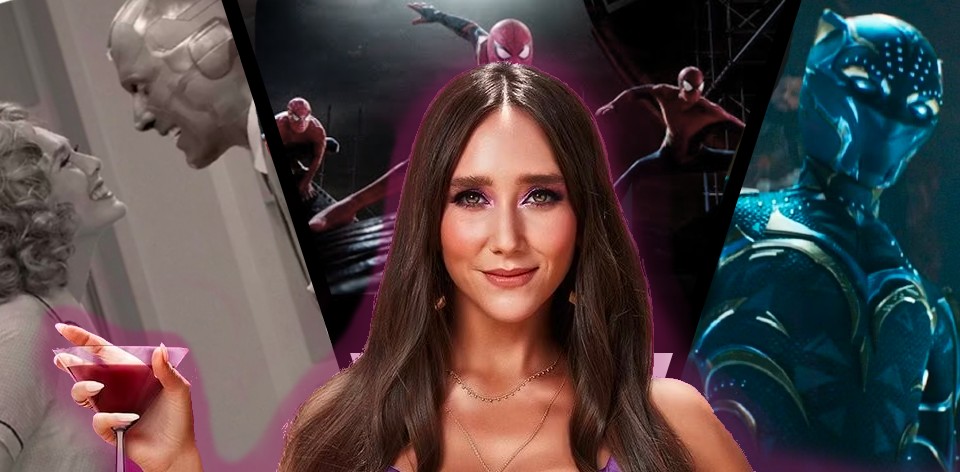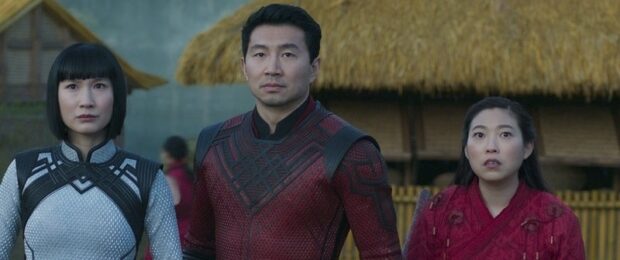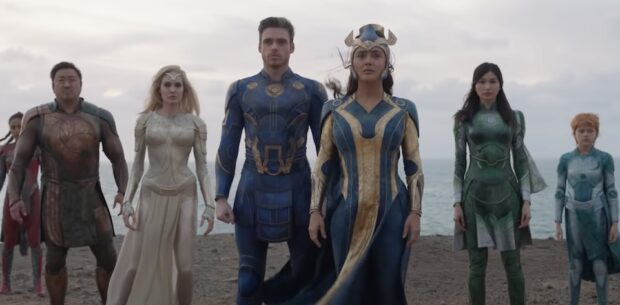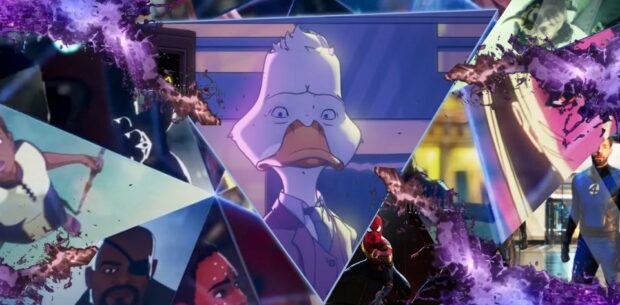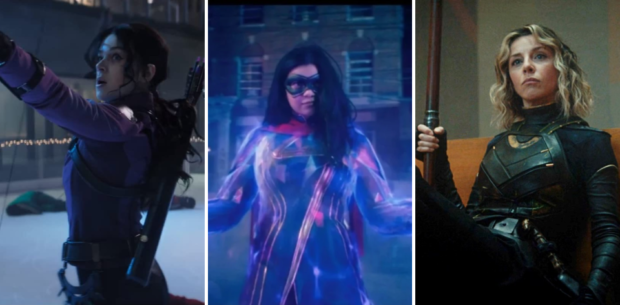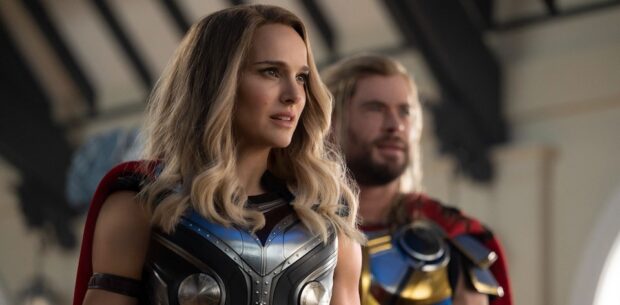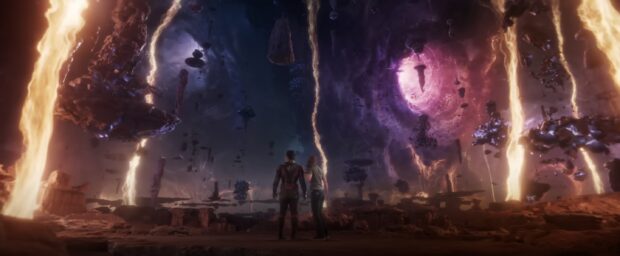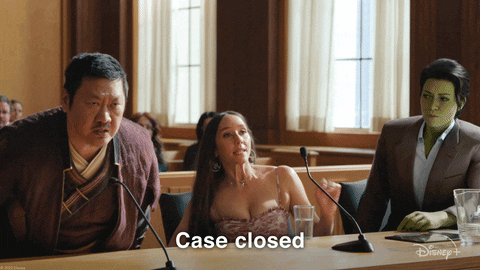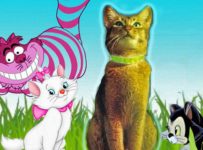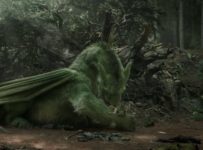WARNING: This piece contains spoilers for pretty much all of the MCU to date.
With the Guardians of the Galaxy Holiday Special now on Disney’s flagship streaming service, Phase Four of the Marvel Cinematic Universe has come to a close. Ok, without looking it up, quickly recap the progress between the start and end of the Phase. Go!
Struggling? It’s certainly not for lack of content. When Phase One of the MCU began in 2008 with Iron Man, we saw six films over the course of a four year period. By comparison, Phase Four kicked off in January 2021 with streaming debut WandaVision, and has consisted of 7 films, 8 television series, two television specials, and several short film tie-ins. They did it all in less than two years.
Yet it’s hard to define a singular focus for all of this movement. Where Phase One built towards New York, and Phases Two and Three led us to Avengers: Endgame, Phase Four seemed to be about establishing pathways to future phases.
New faces, old stories
Which isn’t to say that Phase Four hasn’t found its internal connections and motivations. In this period, the MCU introduced at least eight new sets of heroes across the cinema and home theatre screens.
Indeed, much of 2021 was about introducing us to new people. The earlier phases had been reliant on a core group that was somewhat decimated at the end of Phase Three, so we’re on the road to a new Avengers at some stage. The Falcon and the Winter Soldier and Black Panther: Wakanda Forever established a new Captain America and Black Panther respectively, while Eternals, Shang-Chi and the Legend of the Ten Rings, Moon Knight, Ms. Marvel, and She-Hulk: Attorney at Law introduced us to whole new heroes.
It also managed to redeem multiple storylines that ill-fated franchises left hanging…
Even the flashback film Black Widow introduced a ‘new’ Widow called Yelena (Florence Pugh), who later turned up in Hawkeye. Speaking of which, that show also gave us the incomparable Kate Bishop (Hailee Steinfeld), one of the best new characters in the Phase.
Yet there was also a heavy emphasis on legacy characters as well. Spider-Man: No Way Home was based almost entirely on a franchise two decades old, drawing heroes and villains from both Sam Raimi and Marc Webb’s films. It also managed to redeem multiple storylines that ill-fated franchises left hanging, and brought about a rousing conclusion that pleased all but the most cynical viewers in the audience. Suffice it to say, this is very much a film for the fans.
Speaking of Raimi, Doctor Strange and the Multiverse of Madness nodded to multiple versions of X-Men, fan-casting of Fantastic Four, and even the ill-fated Inhumans series. Characters from the Netflix/Marvel series Daredevil (2015-2018) turned up in No Way Home, She-Hulk, and Hawkeye as well.
This is perhaps where the first criticism of MCU’s direction can be drawn. Event films have boiled down to references to other films. Sometimes this was confined to the credits (such as Harry Styles and Patton Oswald in Eternals), while others based a whole feature around it. The trend seemed to be clear: cameos and familiar faces means an increasing reliance on brand recognition. As fun as the Doctor Strange film was, the aforementioned cameos sometimes feel contrived. (Star Wars saw a similar trend, with the Book of Boba Fett spin-off).
This is exacerbated by the more common criticism of the general formulaic nature of the films. The familiarity of Marvel plotting, all variations on the Campbellian Monomyth, has been sledged and analysed to death. Indeed, the season finale of She-Hulk: Attorney at Law wonderfully mocked the predictability of The Marvel Ending in meta fashion. Jennifer Walters/She-Hulk bursts out of the Disney+ menu screen and into the Marvel offices, where she meets the story-making robot called K.E.V.I.N, a reference to Marvel Studios head Kevin Feige. (Mind you, they also did this to paint themselves out of a corner that had led to a more typical boss fight).
Moving the multiuniverse forward?
From WandaVision onwards, it was clear that Disney/Marvel could used the small screen to experiment and the theatrical outings for the more traditional narratives. So, if the Cinematic Universe moved forward in the last two years, it was largely thanks to the streaming series.
Loki set the tone relatively early. One if its strengths was an ability switch genres at will. It’s a bureaucratic time comedy one week. It’s an episode of Doctor Who the following week (‘Lamentis’). It doesn’t end with the big CG battle required by all MCU outings, and quite literally cracks the Multiverse open for infinite possibilities.
As the arc shifts from a universe to a Multiverse, shows like the animated What If… gave us a hint at all the possible places we could go with a simple remix of the existing characters. Captain Carter (Hayley Atwell), for example, was a star character of the series, turning up again in the comparatively restrained Doctor Strange and the Multiverse of Madness. (In a movie that had both ‘multiverse’ and ‘madness’ in the title, it really only served up a handful of options. For the record, Sony’s Spider-Man: Into the Spider-Verse remains the undefeated Multiversal champion).
Yet for the moment, the status remains decidedly quo. Indeed, Spider-Man: No Way Home quite literally hits the reset button for Peter Parker at the end of the film. So, despite Marvel beating DC to its one major thing — and is on track to do a big screen Crisis while the Distinguished Competition buries its projects for tax purposes — we are yet to see the full payoff.
Hits
Lest ye think it was all doom and gloom, Phase Four did give us some terrific storytelling, outstanding support characters, and coy hints at things to come.
In Werewolf By Night, the first MCU ‘Special Presentation’ on Disney+, you got the sense that everyone involved was just enjoying getting to play in the big toybox. Which is exactly what this delightful throwback to 70s Marvel horror comics is for director Michael Giacchino. Throwing us right in the middle of some deep cuts and letting the chips fall where they may. Gael García Bernal is terrific, of course, and Zoë White’s black and white photography (complete with intentional flaws like ‘cigarette burns’ in the corner) adds to the nutty joy of it all. It was a model The Guardians of the Galaxy Holiday special happily followed.
In fact, after taking a staggering 21 films to have the first solo female hero headline a chapter of the MCU, Phase 4 had no less than half a dozen women headlining their heroic journeys.
In addition to the aforementioned Loki and What If… series, Hawkeye and Ms. Marvel brought us additional joy throughout the year. Hawkeye gave us several prominent things: it was a Christmas series, it featured Clint Barton (Jeremy Renner) struggling with home life and a hearing impairment, and it introduced us to Kate Bishop. In Ms. Marvel, Iman Vellani brings the character so lovingly crafted in the comics (written by G. Willow Wilson and drawn by Adrian Alphona) to life, and is surrounding by an amazing representative ensemble that I hope we see in future iterations.
In fact, after taking a staggering 21 films to have the first solo female hero headline a chapter of the MCU, Phase 4 had no less than half a dozen women headlining their heroic journeys. Black Widow, Wanda, Ms. Marvel, and She-Hulk all took the spotlight, as Shuri stepped in the mantle of Black Panther. That’s before you count Jane Foster as Thor, about half the cast of Eternals, and the runaway success of Sylvie (Sophia Di Martino) in Loki.
Which brings us to the lightning bolt of a declaration: She-Hulk‘s Madisynn was the breakout start of Phase 4. First appearing as a drunken partygoer at a magic show, her friendship with Wong, courtroom testimony, and generally positive attitude made her the hero we needed for 2022. That ‘Y’ really wasn’t where we thought either.
Missteps and missed opportunities
While there was a time that everybody mentioned ‘New York’ as shorthand for The Avengers, and there was an almost obsessive need to document everybody’s reaction to The Blip, Phase Four was also an era that left a giant head sticking out of the ocean — and it barely rated a mention.
Which leaves us feeling that the overall vibe of Phase Four was one of disconnection. Eternals was a really interesting concept that should have worked, yet Marvel tried to have its cake and eat it too, crafting a new origin story that introduces a whole new element but never giving it time to breathe. The stakes keep shifting, good guys become bad (and vice versa), and the only real focus was whatever foe was being punched at that particular moment. Indeed, one can’t help but wonder if the entire film was an extended trailer for future films.
The Disney+ series Moon Knight fell into this camp for me as well. Visually dazzling and with a genuinely top-notch cast, it was ultimately a 282 minute origin story that could have been happily sliced in half and presented as a feature film. There were moments where I felt the show was spinning its wheels to make up the predetermined running time, and others (such as the packed finale) where it strained to fit all the cracking ideas in at once. Of course, the latter is an issue that was true of most of the Marvel Disney+ series as well.
Burdened as [Phase Four] is with the exposition of setting up something else, all of these stories take their time before hitting us with a flurry of activity in the final moments.
Meanwhile, Taika Waititi’s Thor: Love and Thunder felt like it was still being was cobbled together after production had started, throwing elements against the walls and seeing which of the four quadrants they stick to. There are times when literal deus ex machinas are tacked on to give it some of that Endgame climax magic. Characters neglected since the beginning are suddenly remembered, and it feels on balace as though whole swathes of story have been cut out.
So, here we see the other problematic pattern of Phase Four. Burdened as it is with the exposition of setting up something else, all of these stories take their time before hitting us with a flurry of activity in the final moments. WandaVision, She-Hulk, and The Falcon and the Winter Soldier readily fell into this pattern as well.
What’s next
Phase 5 of the MCU kicks off in February 2023 with Ant-Man and the Wasp: Quantumania, which promises to pay off all of the Multiverse mentioned. Indeed, Phases Four through Six are said to constitute the Multiverse Saga, in much the same way as Phases One through Three represented the Infinity Saga. So, it’s really no shock that Phase Four felt less than comprehensive.
The rate of releases doesn’t seem to show any signs of slowing down either. In 2023 and 2024 alone, no less than six films — also including Guardians of the Galaxy Vol. 3 (2023), The Marvels (2023), Captain America: New World Order (2024), Thunderbolts (2024), and Blade (2024) — along with seven seasons of television will make up Phase 5.
So, if you were hoping the omniculture of Marvel was a flash in the pan, you’re out of luck until at least 2026 when Avengers: Secret Wars wraps up this saga. For now, we just have these 3,241 minutes to comb through for clues about things to come.
Don’t forget to read all of our other coverage of Phase Four.

